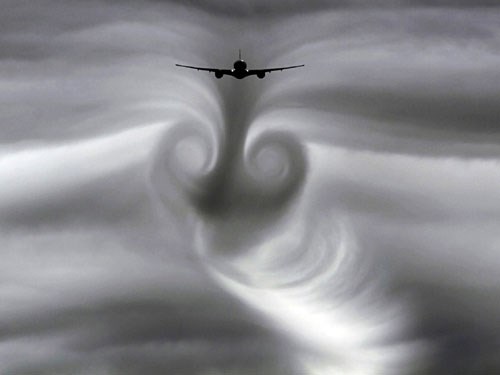Global warming threatens the safety of flights
Global warming is forcing airplanes to withstand strong gusts of wind, and jolts from air turbulence.
Global warming threatens the safety of the airline industry
Global warming may be creating a tougher cycle in the air, for example, the wind will get stronger, pushing the flight into a state of struggle in the air. According to new research, in the United States alone there are about 30,000 commercial flights a day. And if the round-trip time changes by 1 minute, commercial airplanes are retained for an additional 300,000 hours / year. This suggests that airlines need to add 4.5 billion liters of fuel, equivalent to $ 3 billion and add 10 billion kilograms of CO2 to the atmosphere every year, according to a report published in the Nature Climate Change magazine.

The airline industry is directly affected by global warming - (Photo: io9.com)
Expert Kris Karnauskas of Woods Hole Oceanographic Institute in Massachusetts said 'high-level wind mobility models are a key factor affecting flight time'. And this creates a dangerous loop, with the release of CO2 causing global warming, thereby causing strong winds to hinder flights, causing the aircraft to consume more fuel and release more CO2. gas.
According to Dr. Karnauskas, airlines keep a close eye on the climate patterns that occur every day, but they do not seem to care about the cycles that take place within a year or more.'They never said: Dear guests, El Nino is coming, so we have to extend the flight time by 30 minutes. I have never seen any company mention that, ' said the US expert.
Another study has previously warned that global warming will cause flights to suffer from increased turbulence . This is due to the effects on the whirlpools that wind around the planet at the same height being used by civil aviation routes. These are horizontal winds of up to 1.6 km, speeds up to 400 km / hour.
Head Paul Paul of the University of Reading (UK) commented: 'Air turbulence not only disrupts air service on aircraft, but also injures hundreds of passengers and crew each year. It also delayed flights and damaged aircraft, with total losses of up to 156 million dollars per year '.
Also according to a report from the University of England, the frequency of air turbulence in flights between Europe and North America will double by 2050 and the intensity increases by 10-40%. Once again, the redirection of flights to avoid falling into the bouncing air area may increase fuel consumption and carbon emissions even more, and the delay of aircraft will become frequent, and on all air tickets will go up, according to a report published in the Nature Climate Change magazine. And when the aircraft enters the turbulence area, passengers may be injured if they do not buckle up. Dr. Williams said he had changed his routine when flying by plane: 'I will definitely tighten my seatbelt, which I have never done before.'
- Global warming delays the next ice age
- Global warming can erase the Olympics since 2085
- Video: 135 years of global warming summed up for more than 30 seconds
- Scotland faces 'apocalypse' because of global warming
- The reason for the worsening winter is despite the global warming climate
- Climate warming threatens polar bears
- Cover the sun to block ... global warming
- Where will the sea level be highest due to global warming?
- Nature helps curb the global warming
- Global warming has terrible consequences
- Two Vietnamese granaries will be submerged in the sea after 5 years?
- Sea water can rise by 6m in the future
 Is the magnetic North Pole shift dangerous to humanity?
Is the magnetic North Pole shift dangerous to humanity? Washington legalizes the recycling of human bodies into fertilizer
Washington legalizes the recycling of human bodies into fertilizer Lightning stone - the mysterious guest
Lightning stone - the mysterious guest Stunned by the mysterious sunset, strange appearance
Stunned by the mysterious sunset, strange appearance